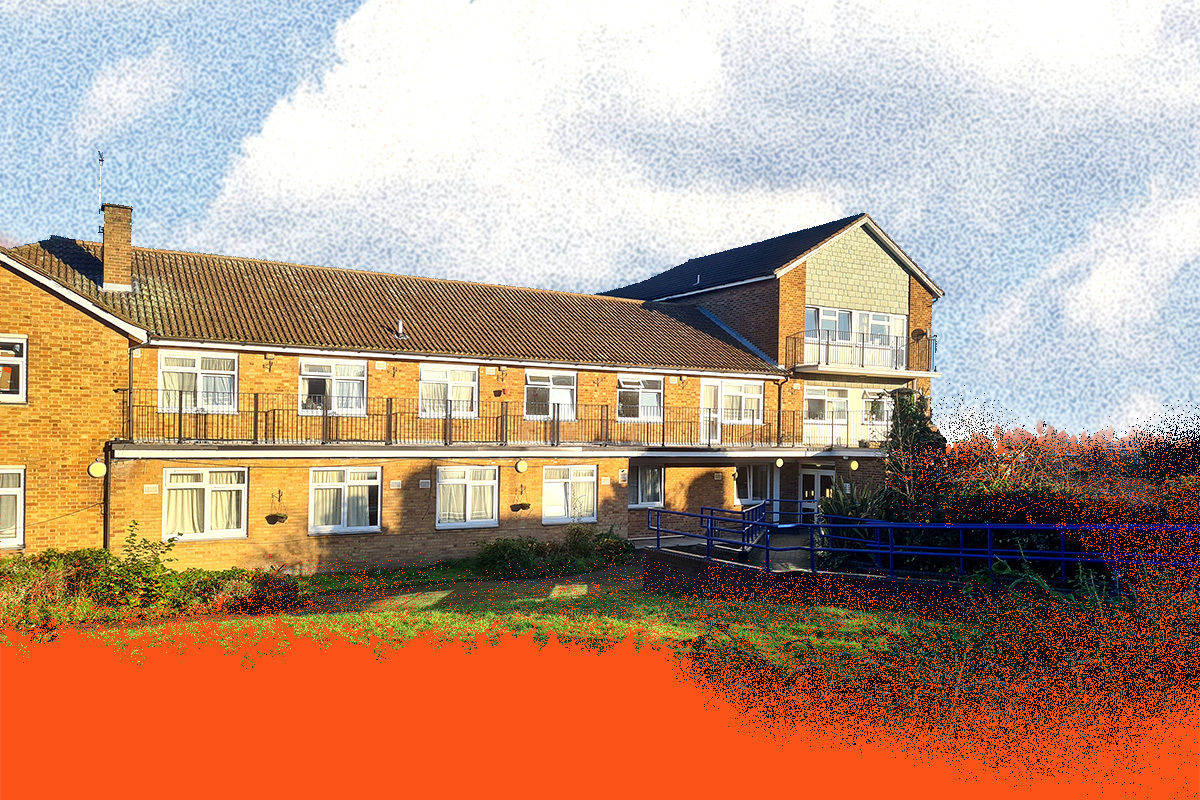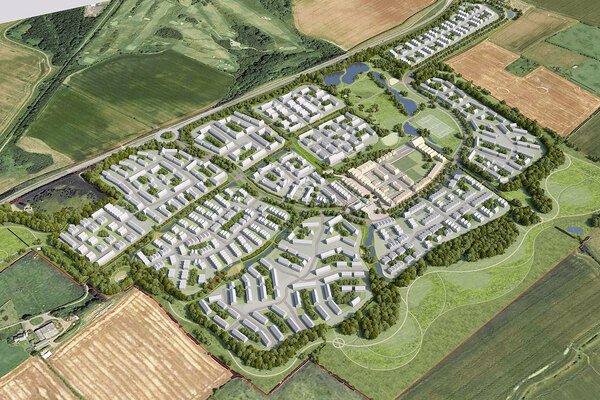CPD module: making data-led decisions in social housing
How data is stored and used is crucial for decision-making across the social housing sector. Dr Laura Wales, head of data at Raven Housing Trust, explains why, in association with smart tech provider Switchee.
Read the article, take the quiz at the bottom of the article, earn CPD minutes.

In association with:

Learning outcomes
After reading this article, learners will be able to:
- Consider the multiple sources of data available to social housing providers generally, and within their own organisations specifically
- Discuss common obstacles to successfully using data to guide decisions (eg disparate data sources, data held in disparate systems, unstructured data, legacy systems)
- Describe the role of data analysis and presentation in enabling data-guided decisions
- Cite some ways in which obstacles to successfully using data might be overcome, drawing in part on the example of a specific housing association
It has been widely argued that data-driven insight could support social landlords to make better decisions, leading in turn to better financial performance and improved services for customers.
However, there is sometimes less clarity about the definition of a data-driven decision. There are also common obstacles to using such an approach. These might include information that is dispersed and difficult to access, a prevalence of outdated IT systems, and/or challenges with data quality.
This CPD piece seeks to explore and explain the concept of a data-guided decision, explaining why such an approach can be useful. It also explores how obstacles to data-guided decision-making might be overcome. It draws on the experiences of staff at Raven Housing Trust, a housing association providing more than 7,000 homes across Surrey and Sussex.
What is a data-driven decision? Why is it beneficial for decisions at social landlords to be guided by data?
The consequences of decisions taken within social landlords can be significant. Choices made can influence the well-being of tenants, the financial strength of the organisation, and even levels of compliance with safety regulation.
This means it is important to make decisions in as informed a way as possible. Both the benefits and potential drawbacks of a potential choice need to be understood before an action is taken.
Then, once a decision has been made, there needs to be a way of monitoring its impact – whether for good or for ill.
When a decision can be made in this informed way, and its consequences can be robustly monitored, it can be described as data-driven. It has been made on a foundation that allows for an understanding of the problem, the development of solutions, and the monitoring of any solution that is implemented. This means the decision has the best possible chance of being the right one, made for the right reasons.
Data-driven does not mean only making decisions that can be measured in, for instance, impact on a bottom line. It does not mean disregarding information which cannot be measured in figures – stories of resident experience, for instance, are a valuable evidence base for data-driven decisions. It also does not mean abandoning changes which involve trial and error, or disregarding the instincts of those who have experience and expertise.
For all these reasons, it can be helpful to think of the notion of a data-guided decision as opposed to that of a data-driven decision. This introduces nuance, so leaving space for human judgement and experience, as well as hard numbers.
For which decisions is it particularly important data is used?
Data is helpful for every single decision made within an organisation. With that said, for social housing, there are two areas in which it is particularly important that choices are data-guided:
- Decisions with a significant financial component: A financial impact is clearly a strong reason to have substantive evidence for a decision. It is important to be confident in the amount of money which will need to be committed, and to understand what that amount of money is likely to achieve. At a social landlord, decisions that fall into this category might include those on planned maintenance, asset management and development, or disposal of properties.
- Decisions that will impact residents: Ideally any change which will have a fundamental impact on customers, and particularly anything relating to customer safety, should be grounded in robust data. It is also particularly important to be able to reliably monitor the impact of such decisions.
What prevents social landlords from using data to guide decisions?
Several factors mean it is challenging to make consistently data-guided decisions within social landlords’ teams.
- Data being held across multiple systems: As part of a transformation programme at Raven Housing Trust, staff conducted a stocktake of how many systems were being used to hold data. It discovered that close to 60 different set-ups were being used across the organisation, from back-office functions, to HR and finance, through to customer-related front-office work. This is a situation common across the sector, and is a natural consequence of computer systems having evolved so significantly over the past two decades or so. Data being dispersed makes it difficult to easily gain one picture from it. This in turn makes it difficult to make a truly data-driven and informed decision.
- Data being held in outdated systems: Many of these 60 solutions were ‘legacy’ systems. This describes software or hardware that is outdated and has been superseded, but that is still in use. A legacy system meets the need for which it was originally intended, but generally does not meet current demands – whether because it is slow, unreliable, no longer updated by the software vendor, or because it has not evolved in line with the way in which something is done now. Users may be forced to create workarounds for these limitations and, even then, it may not be possible to extract data in the way that is needed to inform decisions.
- Data being held in different formats: Consider data that is held in Word, and data that is held in Excel. Although the two programs are from Microsoft, consolidating information held between them can be awkward – formatting issues might emerge when cutting and pasting between them, for instance. This situation is mirrored with all manner of systems, and can become more complicated still when two set-ups cannot ‘talk’ to one another at all. Even if data is all recorded in one system, it might be in an inconsistent format.
- Worries over data quality and consistency: Different teams may record data in different ways. Sometimes data may even be recorded inconsistently within a team.
- Too much data: Not having enough data is rarely a problem within social housing organisations. On the contrary, a vast amount of information is often collected, with the hope that it might prove relevant to decision-making. This can mean that attention is given to collecting and maintaining information that actually provides little insight, leaving less space to focus on that which would be helpful. The potential for true insight is lost among a wealth of background noise.
- An inability to pool data with other organisations, or to compare performance against other organisations: In some instances, bigger datasets than exist within an individual organisation are needed to derive insight. Predicting the point at which a risk of damp and mould is going to emerge, for instance, could support earlier intervention. To do this, however, it is likely that information from across a number of social landlords would be required. With data held in different formats and systems between organisations, this becomes either difficult or impossible. There is also the challenge that data is sometimes sensitive, relating as it can to people’s homes, lives and finances.
How have staff at Raven Housing Trust sought to increase the potential for data-guided decisions?
A transformation programme, running over several years, has aimed to increase the ease with which Raven Housing Trust staff can draw on data.
A key focus of the programme was consolidating the software systems used at the organisation, trying to move away from legacy set-ups into as few core products as possible. The result has been a move from around 60 separate systems into six core products, with almost the entirety of housing management moved from legacy systems into a new system. Finance and HR systems were replaced.
At the same time, work has been under way to build a data repository – in other words, a central pool of the information that is held across different systems. By consolidating data in this way, cross-system analysis and reporting becomes possible. Information that was previously separate can be connected, giving the potential for deeper analysis and insight.
How can individual teams be supported to make data-guided decisions?
There are always opportunities to bolster the potential for data-guided decision-making. This is true even outside a major software transformation or data repository project.
Steps might include:
- Fostering an openness about which data exists, where, and about its quality: Often members of individual teams are aware that their data storage and collection methods are imperfect. Recognising and being honest about that imperfection – building an open, non-judgemental understanding – can help reveal ways to improve things. At Raven, those working on the transformation project asked anyone holding data to name their trusted source, whatever it might be, and to be honest about any potential issues with data quality or integrity. There is a recognition by members of the data team that the experts in operational information are those who are collecting it – their honest opinions should be valued accordingly.
- Increasing a sense of ‘ownership’ of data: Once trusted sources of data have been established, it is helpful for a custodian of that trusted source to be identified. No dataset will ever be flawless, but identifying someone who has ‘ownership’ of a piece of data and giving a sense of responsibility for that information is helpful.
- Seeking to establish consistency of format: Consider the basic example of a spreadsheet which records customer feedback received each month. One month, a member of staff realises that there is another useful piece of information which could be valuably added to the spreadsheet, and so adds a new column to it. This then means that what was column A becomes column B, and so on. It then becomes more awkward to quickly, easily and accurately compare the data in this sheet to those in previous ones. This is an example of how even the smallest change to data format impacts on the ability to gain insight from it. Agreeing consistent standards within a team and/or organisation can make a big difference to the ability to efficiently make data-guided decisions. This is particularly important if there is a desire to use artificial intelligence and/or automation in the future. If such a tool is unable to find the data in the format or location that it has been ‘taught’ to, then it will not function.
- For as long as legacy systems are in place, making sure any ‘workarounds’ are recorded: Many housing providers are operating with stretched resources. Software and hardware has to be used far beyond the point at which it has become outdated. This sometimes means staff learn how to use ‘workarounds’ to make the system suitable for current use. Perhaps a field requires a six-digit code to be entered, but the organisation has since started using five-digit codes. The member of staff responsible for entering the data has therefore added a ‘0’ at the start of every five-digit code to turn it into the six-digit figure expected by the system. This works well, but only for as long as the relevant member of staff is in post. Where workarounds are in place, then, it is important to build institutional knowledge of them rather than an individual or team understanding.
- Being honest about which data is useful to collect and maintain, and which is not: A ‘belt and braces’ approach to data collection and maintenance is common – a sense that a piece of information is worth having just in case it might subsequently prove relevant to a decision. More helpful is to have thoughtful conversations over which information is most useful now, which will be useful in the medium term, and which might be useful in the longer term. Establishing which data will realistically be helpful for which decisions, and when, sometimes makes it possible to stop collecting other information – so reducing the burden on staff.
How does data presentation play into the ability to make data-guided decisions?
High-quality information is important to, but not sufficient in itself for, data-guided decisions. To some extent, the quality of data becomes a moot point if users cannot easily view it, understand it, manipulate it and analyse it.
Business intelligence systems can play a part here, making it simpler to create dashboards or charts which visually represent information. Some systems enable individual members of staff at all levels to create such dashboards or charts.
Who needs to be able to access and understand data within an organisation?
At Raven, there is a strong belief in the value of letting people ‘play’ with data. This enables staff to test their hypotheses against evidence – the very definition of a data-guided decision.
It is worth noting that there is now no role within a social landlord which does not involve data in some way. It is not possible to be data agnostic, or to consider it as someone else’s responsibility. Those collecting, entering and analysing data all need to recognise the importance of this to the organisation’s successful operation.
With that said, the ability to directly analyse data will not be of equal relevance to all members of staff. Nor will every piece of data or analysis be equally relevant across the organisation.
The purpose of collecting and maintaining a specific type of data should always be considered – who is it useful for and what decisions might it inform? Then, who needs to know this information, and in what depth, and how should it be presented? Giving someone an overwhelming and irrelevant amount of accurate information can be as unhelpful as giving limited inaccurate information.
Before any of that, though, there must be a focus on ensuring a single source of truth for any piece of information. Anyone, in any department and at any level of seniority, should find that a data enquiry yields the same information. This is a crucial pre-requisite for data-guided decisions.
Areas to reflect on
- Which data do you, or does your department, collect? Are there limitations to the way in which this information is collected or stored? Are there inconsistencies? How might these be addressed by the organisation, in both the short term and the long term?
- Which environment would you prefer to operate in: one in which information is accurate but difficult to access, or one in which data is less accurate but easily accessed and visualised? Why? What do you think are the advantages and disadvantages of each of those settings?
- What one point in this piece do you want to share with colleagues who may not have read it? How will you share it?
Summary
Decisions taken within social landlords can have multi-faceted impacts. Choices over what to prioritise and where to invest resources can influence the likes of customer experience, organisational performance, and even resident well-being and safety.
This leads to an understandable desire for those decisions to be informed ones. There is a need to understand the potential consequences of a choice – both positive and negative – and to be able to monitor its long-term impact. To be able to do this requires data.
A data-guided decision is one which has been made with a robust understanding of the problem. The solution should be grounded in evidence, and data used to monitor how it works in reality. That might be quantitative data – numbers – or it could be qualitative, so reports of customer experience, for example.
For data-guided decisions to be possible, there needs to be accurate and easily accessible data in place. Currently many social landlords have information spread across a number of systems, some of them outdated. Consolidating data and drawing insight from them becomes difficult or impossible.
Reducing the number of systems in which data is held, and creating a central ‘pool’ of information across all systems, helps provide the environment for data-driven decisions. This can be a big process, however, which may take several years.
In the interim, there are smaller steps that can be taken to empower data-guided decisions. These include auditing data sources, having honest conversations about the potential flaws with current data collection or storage, and deciding which data is – and is not – helpful to collect.
Laying this groundwork will allow those working in social housing providers to make better decisions, ultimately leading to better-quality services for customers.
Now get your CPD points
Next, answer the questions below. Get all the questions correct and you will receive a certificate confirming your award of 30 CPD minutes within 10 working days via email. Get any questions wrong and you can retake the test by refreshing your web browser.
In association with:

References and further reading
- Abdey, J., The London School of Economics and Political Science, 5 core skills to harness data and make better decisions
- Stobierski, T. (2019, 2021), Harvard Business School Online, The advantages of data-driven decision-making
Inside Housing CPD content archive
Find out more about Inside Housing’s CPD offering by clicking here
Fostering data-driven engagement with residents on fuel poverty
Watch the full webinar at the end of this article in association with Switchee, Fostering data-driven engagement with residents on fuel poverty
How have fire safety regulations changed and how can providers remain compliant?
Recent legislation aims to improve fire safety in buildings by increasing accountability and improving fire risk assessments. Andy Frankum, chair of the National Social Housing Fire Strategy Group, explains more
Tenancy fraud – how to spot it and how to fight it
Stephanie Toghill of Islington Council and vice-chair of the Tenancy Fraud Forum explains what tenancy fraud is, how it occurs and how to tackle it
How landlords should deal with TSMs, one year on
Tenant satisfaction measures were brought in by the regulator last year and assess whether landlords are providing quality homes and services to tenants. Tim Quinlan at Riverside explains how it has adjusted to the changes
The importance of good quality data to good air quality
Watch the full webinar, The importance of good quality data to good air quality
Making data-led decisions in social housing
How data is stored and used is crucial for decision-making across the social housing sector. Dr Laura Wales, head of data at Raven Housing Trust, explains why
Building reciprocal relationships with residents
Reciprocity is essential for social landlords to build successful relationships with residents. Anna de Souza and Ingrid Smith at Peabody explain how to go about it
How can social landlords assess whether retrofit is delivering intended performance improvements?
Watch the full webinar, How can social landlords assess whether retrofit is delivering intended performance improvements?
How social landlords should assess and report performance on ESG
Social landlords are increasingly expected not only to consider their environmental and social impact, but also to demonstrate it. Andy Smith, head of impact services at The Good Economy, outlines what providers need to consider
Designing new builds with indoor air quality in mind
Could the drive for energy efficiency in new builds be at the expense of indoor air quality? Dr Jenny Brierley, former housing association chief executive and indoor air quality researcher, explains
AI and robotic process automation – how to use them in social housing
Artificial intelligence and robotic process automation could transform the way social landlords operate and create efficiencies. Monica Quintero, head of digital at Stockport Homes Group, explains the benefits and pitfalls
How to approach decarbonisation policy and strategies
The policy environment on decarbonisation and retrofit is evolving, so how can social landlords continue to build strategies to meet net zero? Richard Ellis, director of sustainability at Peabody, explains
Addressing the development gap in social housing
There is a significant gap between the social housing available in the UK and the number of people who need it. Vicky Savage, executive group director for development and sales at L&Q, looks at the ways in which social landlords can support and increase further development
The importance of indoor air quality
What is indoor air quality, why is it important, and how can it be improved in social housing? Professor Tim Sharpe, head of the department of architecture at the University of Strathclyde, explains
The Procurement Act 2023 – how will it affect landlords?
The Procurement Act 2023 passed into law at the end of last year, with full implementation set for October 2024. How does it change procurement processes, what stays the same and how should social landlords adapt? John Wallace, director of procurement at Clarion, explains all
Funding options in social housing
What does the current finance environment look like in the social housing sector, and what are the different options? Arun Poobalasingam, funding and marketing director at affordable housing aggregator The Housing Finance Corporation, explains more
The new building safety regime
Why has the new building safety regime been introduced, what is different, and what do social landlords need to do to ensure compliance? Andrew Moore, head of operations for building control and planning service at the Building Safety Regulator, explains
The recruitment and retention challenge in repairs and maintenance
The social housing sector faces a challenge in recruiting and retaining repairs and maintenance staff. Mark Coogan, Liz O’Connor, Paul Longman, Russell Thompson and Mike Wilson explore the causes and some potential solutions
Co-production
What is co-production, how can it be fostered, and what are the potential benefits of getting it right? Learn how the concept can be applied successfully to social housing
Psychologically informed environments
How psychologically informed environments take into account how previous trauma might impact people who have experienced homelessness and how they interact with support services
Understanding damp and mould
Housing ombudsman Richard Blakeway discusses how social landlords can tackle the problem of damp and mould in their homes
Tenant satisfaction measures
Watch the full webinar How to collect, report and act on tenant satisfaction measures










